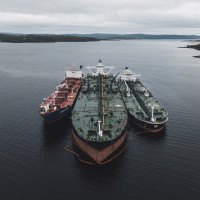Following Part 1 of this series, Understanding Marine Coating Systems, comes this second instalment.
On this article we will discuss the hull. The hull is the second fundamental part of a vessel aside from the superstructure. The marine coatings used in the hull is significantly treated differently from other areas of a vessel. To put simply, deep sea vessels, (vessels that pass through international waters across seas and oceans) require antifouling paints to improve the performance and extend the life of the hull. The principles surrounding the technologies used in the manufacture of antifouling paints are somewhat varied depending on the manufacturer. We will discuss some of these technologies later.
The Hull.
The hull is subdivided into sections. The topside, the boot-top area the side bottom area and the flat bottom. These areas are usually color coded or may have different colors to show the different sections of the hull, and this is for a specific reason as well, because these areas are specified with different marine coatings using different chemistries or technologies.

The Topside.
This is the part of the hull that is never submerged in water, it is always above water. Marine coatings used on this part of the hull usually bears the fleet colors. This section is normally coated with 2 coats of epoxy, about 300 microns plus the colored topcoat, if not the colored epoxy. Enamel, 1k acrylic, 2k polyol are the resin choices for the topcoats used in this section.
The boottop.
This area is the area of the hull that is between the Deep Load Line (or the Maximum Load Line) and the Light Load Line (or the Minimum Load Line). This is the part of the ship that transitions between being submerged in water when the vessel is fully laden with cargo and is exposed above water when the vessel is not carrying any cargo. This area may be coated similarly as the topside. Some would argue that the boot-top should be coated with antifouling paint as well, this may be considered as long as the length of the voyage can be justified using a more specific coating such as an antifouling coating. Normally, marine growth will start to die as they get exposed to air.
The side bottom and flat bottom area.
These two areas submerged 100% of the time while the vessel is in service. Typically, when it comes to marine coatings specifications, they use the same system. They are differentiated because the thickness of the steel used in flat bottom is usually thicker than the steel used in the side bottom.
This section is coated with two layers of epoxy then, a tie coat followed finally by the antifouling paint.
Knowing the different parts of the hull puts in perspective the different marine coatings' requirement for each section.
What Chem On can offer
Contact us for more information regarding your protective marine coatings' needs. We carry a range of products such as epoxy, enamel, 1k acrylic, 2k polyol resins and more for your industrial needs.
 Indonesia
Indonesia 











